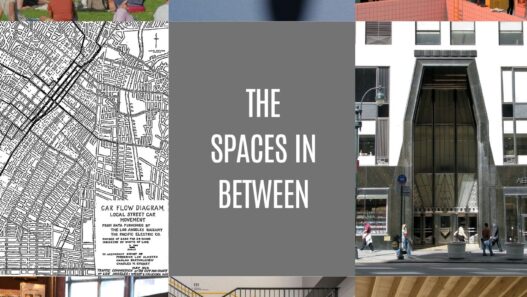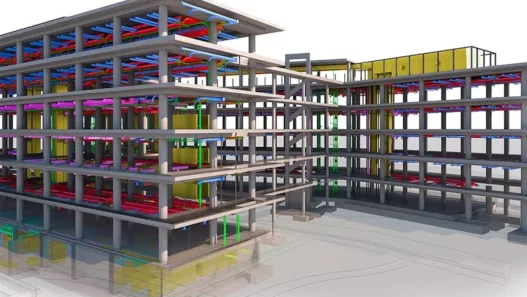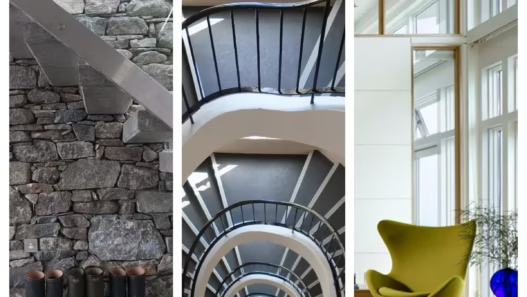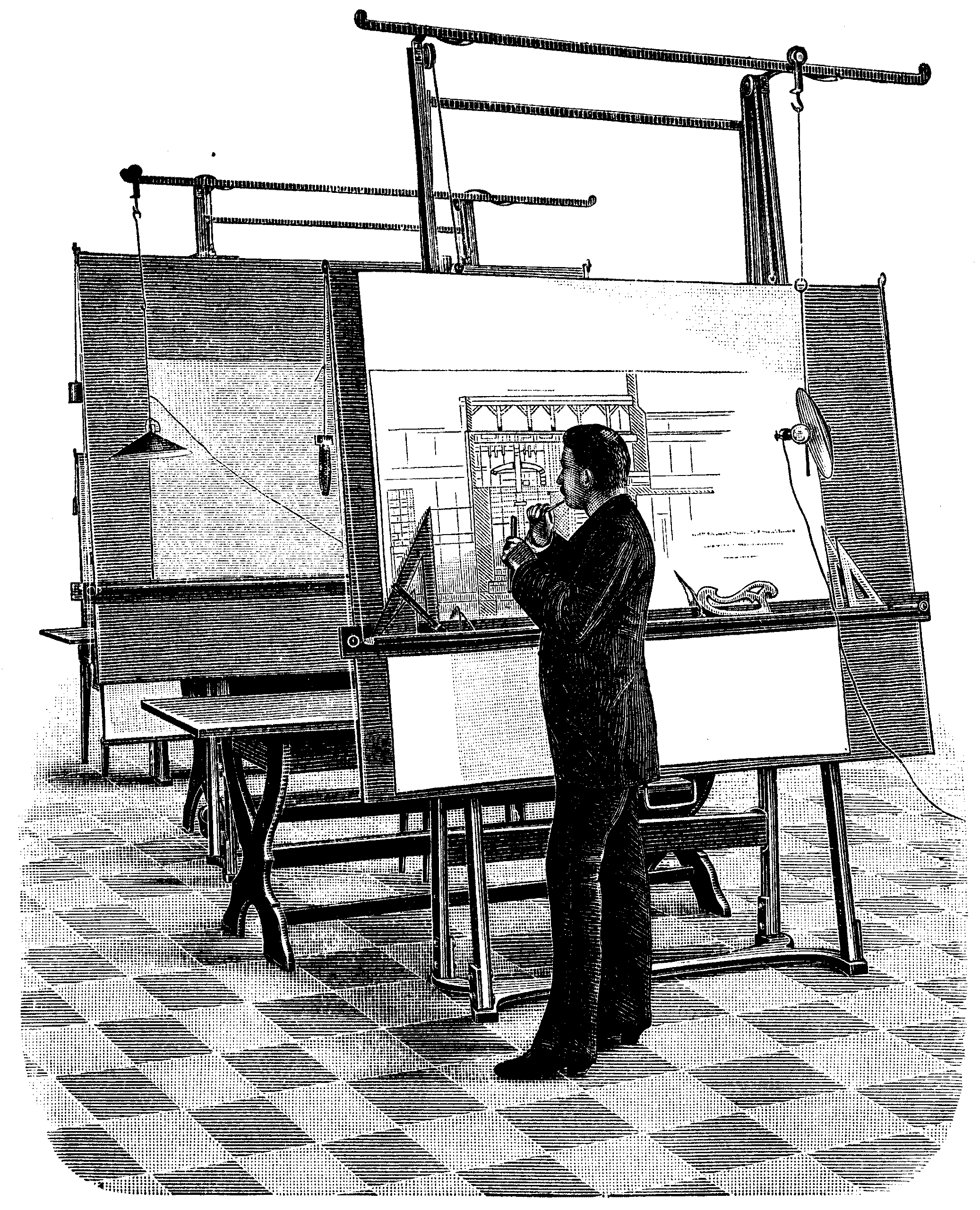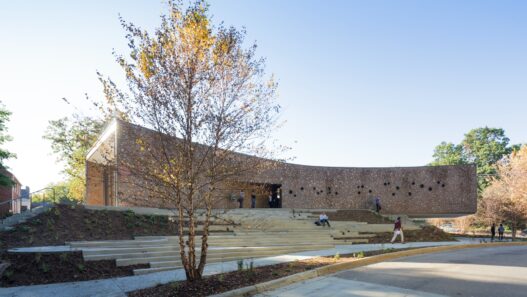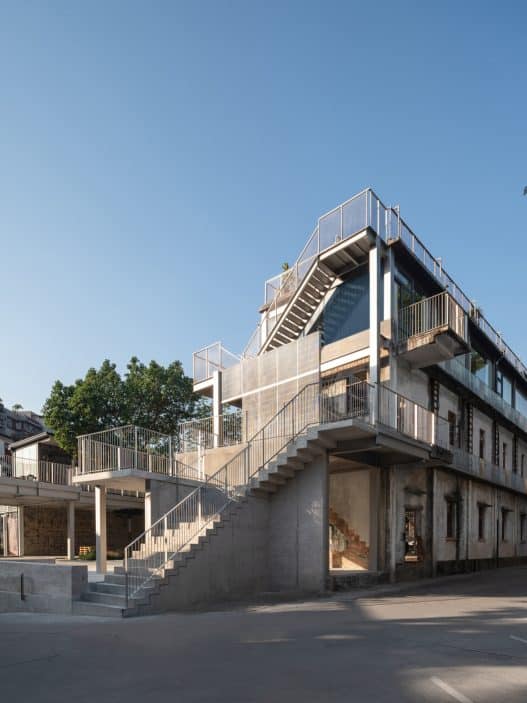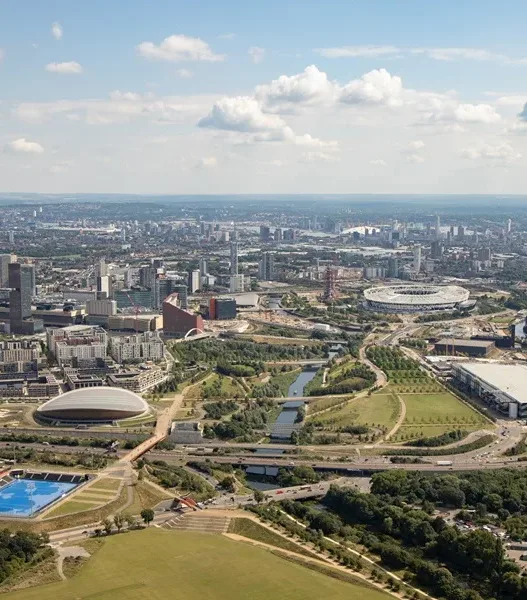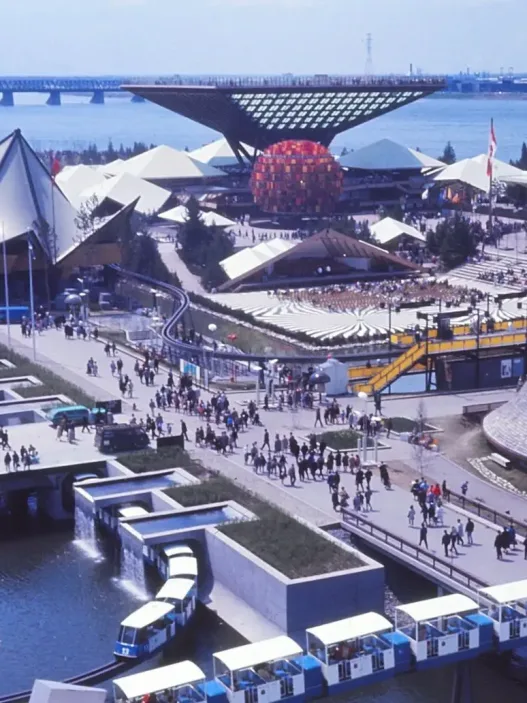Seismic retrofitting is an important practice in architecture and civil engineering that aims to increase the ability of structures to withstand seismic activity. As our understanding of earthquakes and their effects on buildings improves, the need for effective retrofitting, especially in seismically active regions, becomes increasingly important. This process not only protects lives, but also preserves cultural heritage and economic stability in earthquake-prone communities.

Definition and Importance
Essentially, seismic retrofitting involves modifying existing structures to increase their resistance to seismic forces. This is particularly true for older buildings that have not been designed with modern seismic standards in mind. The importance of this practice cannot be overstated; it plays a vital role in protecting human life, preserving property and ensuring the continuity of essential services during and after seismic events. By retrofitting structures, we can significantly reduce the risk of collapse, which can have disastrous consequences in terms of both human loss and economic impact.
Historical Context
The practice of seismic retrofitting has evolved over the decades, shaped by historical earthquakes that exposed vulnerabilities in building designs. Major events such as the San Francisco earthquake and the Sylmar earthquake in California forced engineers and architects to rethink their approach to building safety. Initially, retrofitting efforts were sporadic and often reactive; however, as seismic engineering has evolved, a more proactive mindset has emerged. Today, many countries have learned from past disasters and have established strict building codes and retrofit standards to better prepare for future seismic events.
Challenges in Reinforcement
While the goals of seismic retrofitting are clear, the process itself presents numerous challenges. One of the most significant challenges is the diversity of building types and their unique structural characteristics. For example, retrofitting a historic building requires balancing modern safety needs with maintaining its architectural integrity. In addition, retrofitting often requires a significant investment, so the financial implications can be daunting. Property owners may be hesitant to retrofit due to the costs involved, especially if they are not aware of the potential benefits. Additionally, retrofitting often must be done without disrupting a building’s daily functions, adding another layer of complexity to the process.
Benefits of Seismic Retrofitting
Despite these challenges, the benefits of seismic retrofitting are enormous. One of the most important benefits is increased safety for building occupants. By retrofitting structures, we can significantly reduce the risk of injury and death during an earthquake. Furthermore, retrofitting can increase the market value of a building; properties that are seismically safe are often more attractive to potential buyers and tenants. In addition, retrofitting can lead to lower insurance premiums because insurers recognize the reduced risk associated with retrofitted structures. As a result, the investment in retrofitting pays off not only in improved safety, but also in economic stability for communities that are better prepared for earthquakes.
Techniques Overview
Seismic retrofitting uses a variety of techniques, each tailored to specific building types and conditions. Some common methods include adding steel bracing, reinforcing walls with shear walls, and using base isolators that allow buildings to move independently of ground motion. These techniques can be applied individually or in combination, depending on the needs of the existing structure and the severity of the seismic threat. Advances in technology and materials have also led to innovative solutions, such as the use of fiber-reinforced polymers that provide strength without adding significant weight. As our understanding of seismic forces continues to evolve, the methodologies used in retrofitting will also evolve, allowing buildings to remain resilient in the face of natural disasters.
In conclusion, seismic retrofitting is a vital practice that addresses the challenges created by earthquakes while providing significant benefits to society. As we continue to face the realities of natural disasters, the importance of retrofitting will only grow and become a cornerstone of modern architectural and engineering practices.
Types of Seismic Strengthening Techniques
Seismic retrofitting is a vital process that aims to increase the ability of buildings to withstand earthquakes. As our understanding of seismic activity evolves, so do the methods we use to protect structures and their occupants. A variety of techniques have been developed to increase resilience, each with its own advantages and applications. Let’s examine some of the major seismic retrofitting techniques, starting with flexible support systems.
Flexible Support Systems
Flexible support systems are designed to absorb and dissipate the energy generated during an earthquake. These systems typically consist of diagonal supports that connect various structural elements and allow them to move in a coordinated manner. The flexibility of these supports helps reduce the lateral forces acting on the building during seismic events.
One of the most important examples of flexible supports is the use of steel supports in residential and commercial buildings. These supports can be made from a variety of materials, but steel is preferred due to its strength and ductility. When an earthquake occurs, the supports bend and sway, minimizing the stress on the main structure. This technique is especially effective in areas where seismic activity is common, as it provides a reliable way to improve structural integrity without compromising architectural aesthetics.
Flexible support systems not only protect buildings, they also contribute to their longevity. By allowing structures to flex, these systems can prevent catastrophic failures, reduce repair costs, and increase safety for building occupants.
Base Isolation Methods
Base isolation is perhaps one of the most innovative techniques in the field of seismic retrofitting. This approach involves inserting a flexible support between the foundation and superstructure of a building. The idea is to allow the building to move independently of the ground motion during an earthquake, effectively isolating it from shaking.
A popular form of base isolation uses rubber bearings that can absorb shock and reduce the transmission of seismic forces. These bearings allow the building to sway slightly without experiencing significant stress. A famous example of base isolation can be seen in San Francisco City Hall, which was reinforced with base isolators following the Loma Prieta earthquake. This method not only protects the structure, but also preserves the architectural beauty of historic buildings, making it a preferred option for many urban areas.
Base isolation not only improves safety, it can also lead to reduced repair costs after seismic events. By minimizing damage, buildings can remain functional and accessible, benefiting communities and economies.
Damping Systems
Damping systems are crucial to managing the energy released during an earthquake. Unlike flexible supports that allow movement, damping systems work by dissipating energy through a variety of mechanisms. These systems can be passive, active, or hybrid, and each serves to reduce vibrations.
Passive dampers, for example, are often made of shock-absorbing materials such as viscoelastic or metallic components. These dampers are strategically placed within the structure to resist the forces of an earthquake. An example of this can be seen in the Taipei building, which has a large tuned mass damper, a giant ball that oscillates against the movement of the building, stabilizing it during seismic activity.
Active damping systems, on the other hand, use sensors and actuators to dynamically respond to ground motions and adjust their resistance in real time. This technology is becoming increasingly popular in tall buildings and offers an effective way to increase safety while providing greater design flexibility.
Damping systems not only reduce the risk of structural damage, they also increase the comfort of building occupants. These systems minimize vibrations, creating a safer and more enjoyable environment during seismic events.
Shear Wall Reinforcement
Shear walls are vertical structural elements designed to resist lateral forces, particularly those resulting from wind and earthquakes. In seismic strengthening, the reinforcement of these walls is essential to increase their load-carrying capacity. This reinforcement can be achieved by various methods, such as adding additional concrete, steel plates, or fiber-reinforced polymer materials.
One notable application of shear wall reinforcement can be seen in older buildings that were not initially designed to withstand significant seismic forces. By reinforcing these structures with reinforced shear walls, engineers can significantly increase their ability to resist lateral movement during earthquakes. This method is especially effective in tall buildings where shear walls play a crucial role in maintaining stability.
Strengthening shear walls not only increases safety, but also extends the life of structures. By investing in these strengthening techniques, communities can protect their buildings and ensure they remain functional and resilient in the face of seismic threats.
Architectural Integration
One of the critical challenges in seismic retrofitting is striking a balance between safety and architectural integrity. Architectural integrity involves combining retrofitting techniques in a way that complements the original design of the building. This process requires careful planning and creativity to ensure that retrofit solutions do not compromise the aesthetic value of the structure.
For example, in historic buildings, it is vital to preserve the original façade and interior design. Techniques such as using hidden damping systems or flexible supports that blend seamlessly with existing architectural elements can help achieve this balance. A successful example of architectural integration is the Sagrada Familia in Barcelona, where modern engineering solutions were implemented while preserving Antoni Gaudi’s artistic vision.
By focusing on architectural integration, engineers and architects can work together to ensure that buildings remain safe without compromising their historical or aesthetic significance. This collaborative approach fosters community pride and enhances the cultural value of structures, making them more than just safe havens during seismic events.
As a result, seismic retrofitting is an important practice that combines engineering innovation with architectural sensitivity. From flexible support systems to base isolation methods, each technique plays a vital role in improving the resilience of our built environment. By understanding and implementing these retrofitting strategies, we can create safer communities and protect the structures that define our cities and our lives.
Successful Empowerment Case Studies
Retrofitting is a fascinating approach to architecture that breathes new life into old structures, blending the past with modern needs. It involves updating buildings to enhance their functionality, energy efficiency, and aesthetic appeal while preserving their historical significance. This process demonstrates how cities can honor their heritage while adapting to contemporary demands. In this research, we will examine several important case studies that exemplify successful retrofitting practices, highlighting their unique stories and impacts.
San Francisco Ferry Building
The San Francisco Ferry Building is a prime example of how retrofitting can transform a historic structure into a vibrant hub of activity. Originally completed in 1898, the building served as a vital transportation hub for ferry service across the bay. But by the late 20th century, the building had fallen into disrepair and underuse.
A major renovation project was launched in the early 2000s. The aim was not only to restore the building, but also to reinvent it as a marketplace and community gathering space. The design retained the iconic clock tower and historic façade while introducing modern amenities. Sustainable elements such as energy-efficient systems and water-saving measures were integrated to enhance the building’s functionality.
Today, the Ferry Building is a thriving destination with a vibrant marketplace filled with local vendors, restaurants, and artisan shops. It is a model for how urban spaces can be revitalized by combining historic preservation with modern urban living. This transformation has not only increased foot traffic, but has also revitalized the surrounding waterfront, making it a beloved San Francisco landmark.
Los Angeles City Hall
Los Angeles City Hall, completed in 1928, is another example of a successful retrofit. The iconic structure, with its distinctive Art Deco style, has faced challenges over the decades, including seismic safety concerns. Recognizing the building’s historical and architectural significance, city officials launched a comprehensive retrofit project in the early 2000s.
The reinforcement focused on increasing the building’s earthquake resistance while preserving its historic character. Engineers carefully reinforced the structure using modern materials and techniques that would not disrupt its original design. The project also increased the building’s energy efficiency by improving the heating, ventilation and air conditioning systems.
Today, Los Angeles City Hall stands as a symbol of the city’s commitment to preserving its architectural heritage while ensuring public safety. Successful retrofits have allowed it to remain a functional workspace for city officials while also serving as a historic landmark reflecting the city’s rich history.
Seattle Central Library
The Seattle Central Library is a striking example of how a building can challenge traditional architectural forms while evolving its purpose. Opened in 2004, this modern library was designed by Rem Koolhaas and the Office for Metropolitan Architecture, but incorporated retrofitting elements from the existing structure of the old library, built in 1906.
Creatively blending old and new, the new design features a glass and steel façade that contrasts with the original brickwork. The library was renovated not only to increase its functionality, but also to make it more accessible to the public. Sustainable design principles were central to the project, with features such as natural lighting, energy-efficient systems and flexible spaces that can adapt to different community needs.
Seattle Central Library has since become a center for learning and community engagement that draws visitors from around the world. A testament to how the role of a public institution can be redefined in a rapidly changing urban environment, the library showcases the importance of innovative design in historical contexts.
Francis Hotel
Founded in 1904 in San Francisco, the St. Francis Hotel has undergone a significant renovation to maintain its grandeur while accommodating modern guests. Originally a luxury destination for travelers, the hotel has faced challenges over the years, including the need for updated facilities and amenities.
In the 2000s, an extensive renovation was undertaken to modernize the hotel while respecting its historic essence. The renovation included the restoration of original architectural features such as ornate ceilings and marble lobbies, as well as the installation of state-of-the-art technology and environmentally friendly systems. This balance of old and new has ensured that St. Francis retains its charm and meets the expectations of contemporary travelers.
Today, the hotel remains a major player in San Francisco’s hospitality scene, offering guests a unique experience that blends history with modern luxury. This successful renovation demonstrates how hotels can evolve without losing their identity and maintain their relevance in an ever-competitive market.
San Francisco’daki The Old Mint
The Old Mint in San Francisco is a notable retrofit case study that highlights the importance of adaptive reuse. Constructed in 1937, this historic building originally served as the U.S. Mint, producing coins for the nation. After its closure in 1937, the building faced several challenges, including neglect and the threat of demolition.
In the 2000s, the city recognized the Old Mint's potential as a cultural and historical asset. An extensive retrofit project was launched, focused on transforming the building into a vibrant museum and community space. The renovation maintained the building's architectural integrity while adding modern elements such as climate control and accessibility features.
The Old Mint now houses the San Francisco Museum at the Mint, which showcases the city’s rich history and engages visitors with interactive exhibits. This successful retrofit has not only saved a historic structure, but has also revitalized a section of the city, making it a focal point for education and cultural engagement.
Ultimately, these case studies demonstrate the power of retrofitting in architecture. By creatively blending the old with the new, these projects have not only preserved historic landmarks but also revitalized urban spaces, demonstrating the potential for sustainability and community engagement in architectural practices.
Engineering Considerations
Engineering is at the heart of architectural design, affecting not only how a structure looks but also how it performs. When architects and engineers collaborate, they must consider a multitude of factors to ensure that buildings are safe, functional, and sustainable. This section examines some of the critical engineering issues that shape the architectural landscape.
Material Selection
Material selection is of fundamental importance in engineering and architecture. The materials chosen for construction affect the strength, durability, aesthetics and environmental impact of the building. Architects often explore a variety of materials, from traditional options such as wood and stone to innovative products such as recycled plastics and high-performance concrete.
Engineers consider properties such as tensile strength, compressive strength, and thermal conductivity when choosing materials. Steel, for example, is ideal for skyscrapers due to its strength and flexibility, while wood provides warmth and a natural aesthetic for residential buildings. The choice of material also significantly impacts the life cycle of a building, from construction to demolition. Sustainable materials such as bamboo or reclaimed wood not only reduce environmental impact, but also often increase the overall appeal of a building.
Real-world applications of thoughtful material selection can be seen at the Sydney Opera House, where the use of reinforced concrete and glass enables its iconic sail-like structure. This material selection not only supports the architectural vision, but also withstands the rigors of weather and time.
Structural Analysis Techniques
Structural analysis techniques are the primary tools engineers use to ensure that a building can safely support its intended loads. These techniques involve calculating the forces, moments, and stresses within different components of a structure. Engineers often use computer-aided design (CAD) software to create detailed models that simulate how a building will behave under various conditions, including wind, earthquake, and snow loads.
One common method is finite element analysis (FEA), which breaks down complex structures into smaller, manageable pieces. This approach allows engineers to predict how materials will react under stress and identify potential failure points before construction begins. By applying these techniques, engineers can optimize designs for safety and efficiency, ensuring that buildings are not only durable but also economically viable.
A notable example of effective structural analysis is the Burj Khalifa in Dubai, the world’s tallest building. Engineers used advanced modeling techniques to address the challenges posed by wind forces at this height, resulting in a design that is both striking and durable.
Load Path Evaluations
Understanding load paths is critical to the design of any structure. A load path is the path along which loads (such as weight, wind, and seismic forces) travel from a structure to the ground. Properly identifying these paths ensures that all parts of the building can transfer the forces effectively, preventing structural failure.
Engineers must carefully analyze how loads will move between different materials and components. For example, in a multi-story building, vertical loads from the roof and upper floors must be transferred efficiently to the foundation. This requires careful arrangement of beams, columns, and walls. Miscalculations or poor design can lead to local failures with serious safety implications.
Consider the Eiffel Tower; the iron structure demonstrates both its beauty and engineering skill by elegantly directing loads from its feet to the ground. The design not only creates a visually striking landmark, but also provides stability against strong winds and other forces.
Risk assessment
Risk assessment plays a vital role in the engineering process, particularly in assessing potential hazards that could impact the safety and functionality of a structure. This includes identifying risks associated with natural disasters, structural failures, and even human factors. Engineers conduct comprehensive analyses to assess these risks and develop mitigation strategies.
For example, buildings in earthquake-prone areas must be designed to withstand seismic forces. Engineers often use base isolation techniques that allow a building to move independently of ground motion, reducing damage during an earthquake. Similarly, flood risk assessments inform elevation and drainage solutions for buildings located in vulnerable areas.
The risk assessment process goes beyond simply identifying risks; it also involves collaborating with architects, urban planners, and stakeholders to create structures that are not only safe but also resilient. The rebuilding of New Orleans after Hurricane Katrina is a notable example of where engineers prioritized flood resilience in their designs, leading to innovative solutions that protect against future storms.
Sustainability Factors
Sustainability is increasingly a focus in the fields of architecture and engineering. As the world faces environmental challenges, the construction industry is looking for ways to reduce its carbon footprint and promote sustainable practices. Engineers consider a variety of sustainability factors, including energy efficiency, material sourcing, and waste management.
The use of renewable energy sources such as solar panels and wind turbines is becoming more common in modern buildings. Engineers are designing systems that seamlessly integrate these technologies while optimizing energy consumption. Additionally, the selection of sustainable materials, such as low-energy or recyclable materials, also plays an important role in minimizing environmental impact.
One of the best examples of sustainability in architecture is the Bosco Verticale in Milan, Italy. These residential towers feature vertical gardens that improve air quality, reduce heat, and increase biodiversity. This innovative approach not only addresses ecological concerns, but also creates a healthier living environment for residents.
Ultimately, the engineering considerations outlined here are integral to creating structures that are not only visually appealing but also safe, durable, and sustainable. By thoughtfully considering materials selection, structural analysis, load paths, risk assessment, and sustainability factors, architects and engineers can build a better future for our communities and our planet.
Legislation and Compliance Issues
Navigating the world of architecture involves more than creativity and design; it also requires a deep understanding of regulatory and compliance issues. These regulations ensure that buildings are safe, sustainable, and respectful of their environment and communities. As architects and developers interact with these frameworks, they play a key role in shaping the built environment by adhering to laws and standards that protect public health and well-being.
Building Codes and Standards
Building codes are a set of regulations that set minimum standards for construction and design. These codes cover a range of topics, including structural integrity, fire safety, energy efficiency, and accessibility. They are developed at various levels, including local, state, and national, and organizations such as the International Code Council (ICC) help create consistent standards across jurisdictions.
Understanding building codes is essential for architects because they directly impact design choices. For example, an architect must consider load-bearing walls, which are crucial to the stability of a building, and fire escapes to ensure the safety of building occupants. Compliance with these codes not only protects future building occupants, but also minimizes the risk of legal action for builders.
In real-world applications, consider the construction of high-rise buildings in urban areas. Building codes specific to these structures address unique challenges such as wind loads and seismic activity. By adhering to these standards, architects can create structures that are durable, safe, and resilient over time.
Historic Preservation Regulations
Historic preservation regulations aim to protect buildings and sites that are significant because of their cultural, architectural or historical significance. These regulations generally require that any alterations or renovations preserve the features that define a property’s character. This requires careful planning and often extensive research to understand a building’s historical context.
Architects working on historic sites must balance modern needs with preserving original elements. For example, when renovating a historic theater, an architect may need to preserve ornate plasterwork while installing modern sound and lighting systems. This challenge can lead to innovative solutions that honor the past while accommodating contemporary uses.
Communities benefit from these regulations because they help preserve the unique character of neighborhoods and encourage tourism. Cities such as New Orleans and Savannah are prime examples of where historic preservation has become an integral part of local identity and economic vitality.
Permission Process
The permitting process is a critical step in the construction journey. Before any physical work can begin, architects and developers must obtain various permits from local government agencies. This process includes submitting detailed plans that demonstrate compliance with zoning laws, building codes, and other regulations.
The permitting process can be complex and time-consuming, often involving multiple departments such as planning, fire safety and environmental services. Architects should be meticulous in their applications to avoid delays. Contacting permitting authorities early can help ensure approvals are obtained more smoothly and all necessary requirements are met.
For example, when a new community center is proposed, the architect must navigate zoning laws that determine land use and ensure the design fits the community's vision. This attention to the permitting process not only makes construction easier, but also helps foster positive relationships between developers and the community.
Insurance Effects
Insurance is a vital aspect of any construction project. It provides protection against potential losses or damages that may occur during the construction process or after completion. Architects must understand the various types of insurance, including general liability, professional liability and builders risk insurance.
General liability insurance covers claims for bodily injury or property damage, while professional liability insurance protects against claims of negligence in design. Builders' risk insurance provides coverage for buildings under construction. It is important for architects to understand these implications, as they need to ensure that both the project and their professional practice are adequately protected.
In the real world, consider a scenario where a construction accident damages a neighboring property. Without proper insurance, the financial burden can fall on the architect or developer, leading to significant consequences. Therefore, securing the right insurance not only protects against potential risks, but also increases confidence with clients and stakeholders.
Community Participation
Community engagement is a crucial component of any architectural project, especially in urban environments where developments can significantly impact local neighborhoods. Engaging with the community allows architects to gather valuable information, understand local needs, and incorporate feedback into their designs.
Effective community engagement involves holding public meetings, workshops and consultations. These platforms provide residents with the opportunity to voice their views and wishes, ensuring that projects reflect the values and aspirations of the community. By encouraging this dialogue, architects can create spaces that not only meet functional needs but also resonate with the identity of the community.
For example, a proposed park renovation might include community input on features such as playgrounds, walking paths, and landscaping. By integrating these suggestions, architects can enhance the park’s usability and make it a beloved local asset. Ultimately, community engagement helps build trust and collaboration, leading to projects that are embraced and supported by the people they serve.
Ultimately, regulatory and compliance issues are at the core of the architectural profession. By understanding and navigating building codes, historic preservation regulations, permitting processes, insurance implications, and community engagement, architects can create safe, sustainable, and meaningful spaces that positively impact society.
Future Trends in Seismic Strengthening
Seismic retrofitting is the process of strengthening existing buildings to better withstand seismic activity. As cities grow and the threat of earthquakes continues to be a major concern, the need for innovative solutions is more critical than ever. The future of seismic retrofitting is being shaped by a variety of trends, including advances in materials, the integration of smart technologies, global applications, resilience planning, and the education of professionals in the field. Each of these elements plays a vital role in improving our ability to protect life and property in earthquake-prone areas.
Innovations in Materials
Materials used in seismic reinforcement are rapidly evolving, driven by the need for durability, flexibility and strength. Traditional materials such as concrete and steel are now being complemented by advanced composites and smart materials. For example, fiber-reinforced polymers (FRP) are gaining popularity due to their lightweight construction and high tensile strength. These materials can be applied externally to structures and provide additional support without adding significant weight, which is crucial during an earthquake.
Another trend is the use of shape memory alloys (SMAs). These materials return to their original shape after deformation, allowing buildings to effectively absorb and dissipate seismic energy. This innovative approach not only improves the structural integrity of a building, but also extends its life. The application of these advanced materials is evident in various retrofitting projects around the world, where they provide a modern solution to age-old challenges.
Smart Technology Integration
The integration of smart technology into seismic retrofitting is transforming how buildings respond to earthquakes. Sensors and monitoring systems are now embedded within structures to provide real-time data on seismic activity and building performance. These technologies allow engineers to assess the condition of a building immediately after an earthquake, enabling faster decisions on safety and repair.
What’s more, smart building systems can automate responses during seismic events. For example, some buildings are equipped with dampers that can be adjusted in real time to minimize movement during an earthquake. Such proactive technologies not only protect the building, but also increase the safety of its occupants. Incorporating AI and machine learning into these systems is paving the way for more sophisticated analysis and predictions, ultimately leading to better-prepared cities.
Global Applications and Comparisons
Seismic retrofitting practices vary widely around the world, influenced by local regulations, cultural factors, and historical experience with earthquakes. In places with frequent seismic activity, such as Japan, retrofitting is often required by law, leading to a culture of continuous improvement in building safety. Japanese engineers have pioneered the development of innovative retrofitting techniques, such as base isolation and energy dissipation devices, which have been widely adopted in other earthquake-prone regions.
In contrast, countries with less stringent regulations may lag behind in retrofitting. However, the importance of retrofitting in these areas is increasingly recognized. International collaborations and knowledge-sharing initiatives are emerging, allowing countries to learn from each other’s experiences. For example, after major earthquakes, many countries have sent missions to observe and study retrofitting techniques used elsewhere, creating a global community focused on seismic resilience.
Resiliency Planning
Resilience planning is an overarching framework that encompasses not only the retrofitting of buildings but also the earthquake preparedness of communities. This approach includes assessing vulnerabilities, identifying critical infrastructure, and developing comprehensive strategies to enhance overall safety. Effective resilience planning integrates land use policies, building codes, and emergency response protocols to create a holistic strategy for disaster preparedness.
Cities that prioritize resilience planning are better equipped to survive an earthquake. For example, in San Francisco, comprehensive planning has improved evacuation routes, strengthened public infrastructure, and developed community awareness programs. These initiatives not only protect physical structures, but also empower city residents to respond effectively in emergencies. By fostering a culture of preparedness, cities can reduce the impact of seismic events and enable faster recovery.
Education and Training for Professionals
As the field of seismic retrofitting evolves, the need for education and training for professionals also increases. Engineers, architects, and construction crews must be knowledgeable about the latest materials, technologies, and best practices. Educational institutions are increasingly incorporating seismic design into their curricula, emphasizing practical training as well as theoretical knowledge.
Workshops, seminars, and certification programs are essential to keeping professionals up to date on new trends and innovations. Collaborative efforts between academia and industry are paving the way for a more skilled workforce equipped to meet the challenges of seismic retrofitting. Additionally, ongoing professional development allows practitioners to develop their skills and adapt to new techniques, ensuring communities are well prepared for the future.
Ultimately, the future of seismic retrofitting lies in embracing innovations in materials, integrating smart technologies, learning from global practices, focusing on resilience planning, and investing in vocational training. As we continue to explore these trends, we can build safer, more resilient societies that are better prepared to face the challenges of seismic activity.
Discover more from Dök Architecture
Subscribe to get the latest posts sent to your email.



